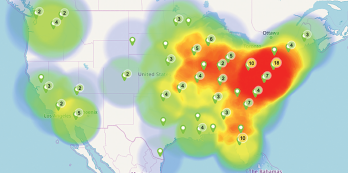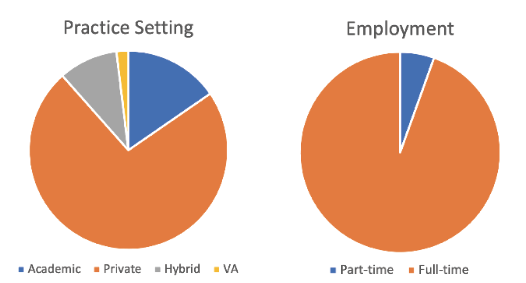
Figure 1: Geographic heat map of rheumatology job postings in the ACR career portal.
Rheumatologists play a critical role in healthcare delivery, especially with an aging U.S. population. Despite this, a workforce shortage exists—one that is projected to worsen.1,2 The ACR CareerConnection service is free to job seekers searching for opportunities in the field of rheumatology.3 This study examines currently available rheumatology employment opportunities across the U.S.
The ACR CareerConnection portal was accessed in September 2020. All rheumatology-related employment opportunities were screened. Jobs related to technologists, nurses, physician assistants and nonphysician staff were excluded from the study. The opportunities were stratified geographically (Northeast, Midwest, Southeast, Southwest or West), by practice setting (academic, private practice, hybrid or Veterans Affairs [VA]) and practice environment (inpatient, outpatient or both). Employment descriptions were also evaluated for visa sponsorship and eligibility for new fellowship graduates.
One hundred forty-six jobs were included. Employment opportunities were geographically distributed as follows: Northeast (n=32; 22%), Midwest (n=40; 27%), Southwest (n=11; 7%), Southeast (n=45, 31%), and West (n=18; 12%) (see Figure 1, above). Stratified by practice setting, 24 (15.3%) were academic, 114 (73%) were private practice, 15 (9.6%) were hybrid and 3 (1.9%) were at the VA. The majority of opportunities were full time (138, 94.5%); 8 (5.5%) were part time (see Figure 2, below). Only 28 (19.2%) invited applications from new fellowship graduates, and 21 (14.4%) mentioned support for visa-requiring candidates.
The current rheumatology job market in the U.S. offers the most opportunities in the private practice sector, concentrated in the Midwest, Southeast and Northeast. Battafarano et al. reported that 21% of adult rheumatologists in 2015 practiced in the Northeast and only 3.9% practiced in the Southwest.1 These differences may be secondary to regional population distribution, desirable locations and competitiveness of the job market. However, the job distribution in rheumatology is similar to that seen in other specialties.4
Less than a quarter of jobs specifically mentioned applications from new graduates, even though more than 200 fellows graduate each year. Additionally, only 14% of the opportunities mention visa sponsorship, despite the workforce shortage and the sizable number of graduating fellows who require visas.

Figure 2: Proportion of jobs by practice type (a) and percentage of full-time vs. part-time jobs (b) in the ACR career portal.
Study Limitations
A limitation of this study is the exclusion of rheumatology career opportunities that are unadvertised or advertised through other portals. Additionally, a single cross-sectional analysis of the current job market without comparison limits the description of trends. The accuracy of the information on the portal was not verified by contacting individual posters. Finally, the study month of September 2020 fell during the COVID-19 pandemic, which may have had a sizable impact on the available career opportunities.
In conclusion, the current rheumatology career opportunities demonstrate a geographic concentration within the Midwest, Southeast and Northeast regions, with only a minority of jobs inviting new graduates and visa-seeking applicants. Future large-scale studies should be performed to establish trends and make predictions as more fellowship graduates enter the workforce.

